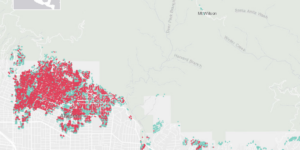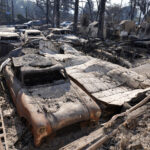The U.S. environment regulator said on Tuesday it is launching new cleanup projects at 25 hazardous waste sites from New Jersey to Oregon with $1 billion in funds.
The sites are in the Environmental Protection Agency’s Superfund program, originally created in 1980, which helps to repurpose land polluted by heavy industry for new economic development, including parks and warehouses.
The $1 billion is the third and final wave of $3.5 billion in funding appropriated by the bipartisan infrastructure bill U.S. President Joe Biden signed into law in 2021.
“This funding will help improve people’s lives especially those who have long been on the front lines of pollution,” Janet McCabe, the deputy EPA administrator told reporters on a call.
McCabe said 75 percent of the 25 sites are in historically underserved communities. The $1 billion also will help speed up ongoing work at 85 Superfund sites. More than 25 percent of Black and Hispanic Americans live within three miles (5 km) of a Superfund site, McCabe said.
New Jersey, which has more Superfund sites than any other state, has three sites among the 25 including Raritan Bay Slag in Old Bridge and Sayreville, where a seawall and jetty were built using slag, waste from the bottom of industrial blast furnaces used to smelt metal from the 1960s to the 1970s.
U.S. Representative Frank Pallone of New Jersey said the funding will work well with an expected infusion of $23 billion over five years for Superfund after “polluters pay” taxes for the program were reinstated in the infrastructure law and Biden’s Inflation Reduction Act.
“Reinstating that Superfund tax is really only about basic fairness that corporate polluters, not taxpayers, should have to pay to clean up the messes that they created,” Pallone told reporters.
In Clackamas, Ore., the funding will help clean up the Northwest Pipe & Casing/Hall Process Company site where pipes were made and coated from the 1950s to the 1980s contaminating soil and groundwater with solvents, primers, coal tar and other pollutants, the EPA said.
Photo: (AP Photo/Wayne Parry)





















 Property and Casualty Insurance Trends for 2025
Property and Casualty Insurance Trends for 2025  Insured Losses From Los Angeles Wildfires Rising: $8B to $20B
Insured Losses From Los Angeles Wildfires Rising: $8B to $20B  Are Cars ‘Structures’? Tallying the Damage from the Los Angeles Wildfires
Are Cars ‘Structures’? Tallying the Damage from the Los Angeles Wildfires  Auto Insurer Files $450M Fraud RICO Case in NY
Auto Insurer Files $450M Fraud RICO Case in NY 




